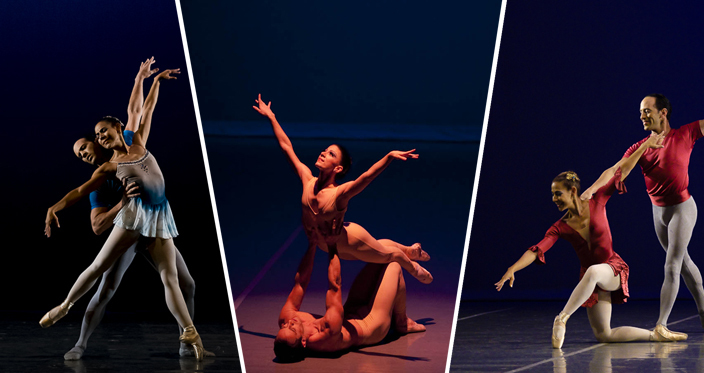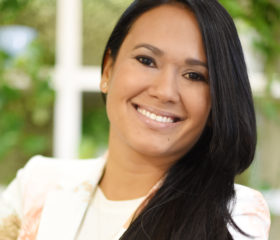 Flamboyan is working closely with twelve arts organizations on the island to preserve, amplify, and sustain the arts in Puerto Rico with an additional round of grantees to be announced this summer. This series will spotlight all twelve Arts Fund grantee organizations.
Flamboyan is working closely with twelve arts organizations on the island to preserve, amplify, and sustain the arts in Puerto Rico with an additional round of grantees to be announced this summer. This series will spotlight all twelve Arts Fund grantee organizations.
Internationally popular ballets like The Nutcracker and Swan Lake are performed alongside local Puerto Rican ballets like Brujas de Loíza and Cuando Las Mujeres, thanks to Ballets de San Juan. This company was the first to showcase these classic masterpieces on the island and connect the people with other countries and cities around the world. But on an island where music sounds like drums and dancing looks like salsa, they couldn’t detach or leave behind their own cultural expression. They also managed to integrate folk and traditional music and dance in what they do.
The company is the longest-running dance school in Puerto Rico, and they continue to nourish the island’s classical and the traditional inheritance through dance.
We asked Ballets de San Juan to answer a few questions about the organization. This is what they told us.
What’s the story behind the creation of Ballets de San Juan? What was the motivation to found it?
The “Compañía de Ballets de San Juan” emerged as a product of the “Escuela de Ballets de San Juan”, which was founded in 1951 by Ana García and Gilda Navarro. The goal was to develop dancers, choreographers, and teachers within Puerto Rican music and expand the dance community on the island. We had our first presentation on November 12th, 1954, in the Theater of the University of Puerto Rico, and it has been running since then. Along the way, BSJ has also incorporated composers, designers, and other artists in the development of this community.
What are your main achievements?
We are very proud to be recognized by the island Legislature and under the UNESCO statutes, as a symbol of the intangible cultural heritage of the people of Puerto Rico. Also, we started the first classical ballet company on the island, which allowed us to professionalize the art of dancing here. At the same time, we were able to develop and sustain a Puerto Rican repertoire that includes original pieces based on our culture. In 1951, we created a scholarship program that makes learning the art of classical dance accessible to all persons regardless of their socioeconomic background. And, in recent years, we also came up with the Tu Casa de las Artes initiative that lends our facilities to other artists or groups who lack thespace to operate.
After the Hurricane, we resumed operations within two days by adjusting our schedule to only daylight hours, given there was no power. Astoundingly, 95% of students continued to attend classes. Everyone had a desire to honor their routine, despite the chaos the storm created-or perhaps as a refuge from it. We also let students from other schools come to our building to practice free of charge until other companies and schools were able to reopen their facilities.
What was the reality of your organization before receiving the Flamboyan Arts Fund grant?
Our scholarship program, the oldest one in Puerto Rico, was adversely affected, as we were unable to provide as many awards as before. Our island-wide program of productions was also impacted. The purpose of this program was to take productions to different theaters and towns across Puerto Rico, free of cost to the public. In 2002, we produced around 30 shows. Currently, that number has been reduced to four productions per semester. We are only able to perform in universities or municipalities that provide everything needed for production-the venue, sets, etc.-since we can no longer meet the costs to do so on our own. Due to this, there are many towns we had to stop visiting; like the town of Yauco, which we have not visited in 10 years. We now arrange much simpler productions that do not require the high expenses associated with the transportation of dancers, lighting systems, scenography, etc.
How are you using the funds you received?
The funds awarded to us from the Flamboyan Arts Fund will go toward repairs at our facilities to fix damage from wind, water and termites. The roof of the lobby was renovated previously and then ruined again by the Hurricane. The ceilings of other rooms were also damaged due to water leaking. Another issue we face is termites. As the surrounding trees were knocked down, termites have spread throughout the facility, and they have managed to damage wheelchair ramps and the scenography in one of the two main rooms in the building. Lastly, windows and power lines were also damaged as a result of the storm.
What do you think about this collaboration between Flamboyan Foundation, Lin-Manuel Miranda, his family and the producers of Hamilton to create this Fund to support arts and culture in Puerto Rico?
The help coming from Puerto Ricans living outside the island was and still is vital to the reconstruction of Puerto Rico. It has been a great opportunity to be amongst the first chosen to receive funds from the Flamboyan Arts Fund. The allocation of these funds is a recognition of the hard work our organization has carried out for over 65 years.
Look out next week for another opportunity to meet a Flamboyan Arts Fund inaugural grantee! Learn more about the Arts Fund @ http://www.flamboyanartsfund.org.

Rosiris Ramos Meléndez is the Communications Manager in our Puerto Rico office. Learn more about her at https://flamboyanfoundation.org/team_members/rosiris-a-ramos-melendez/.